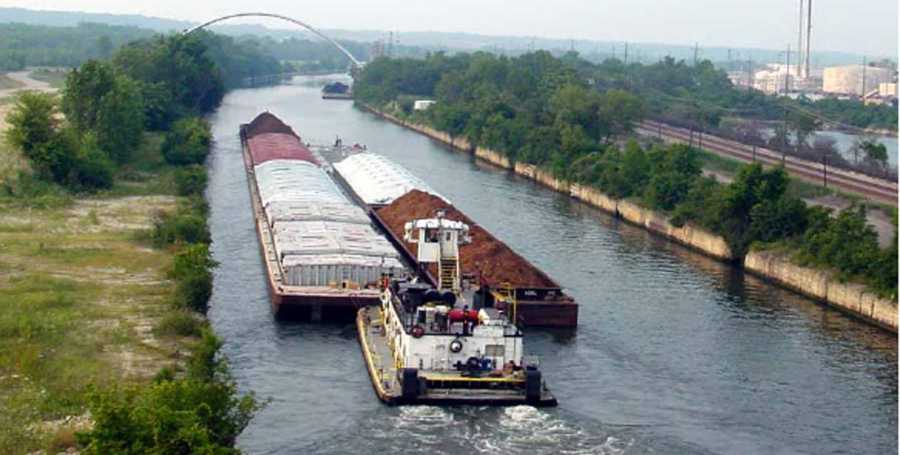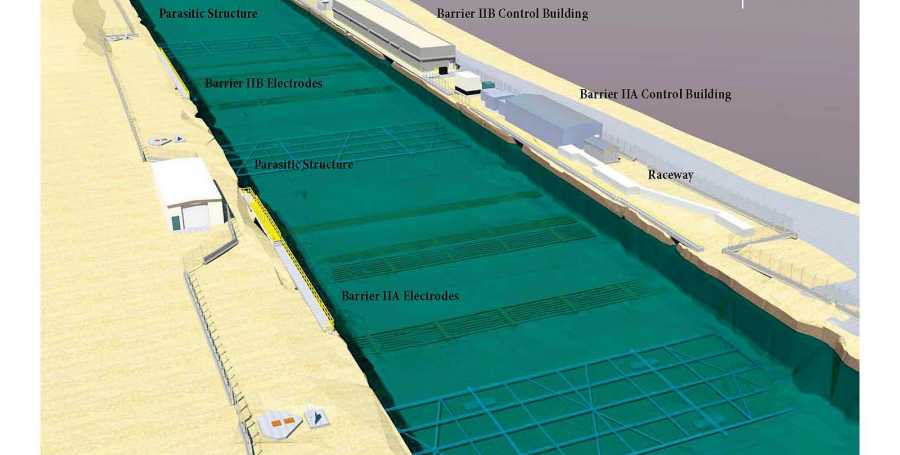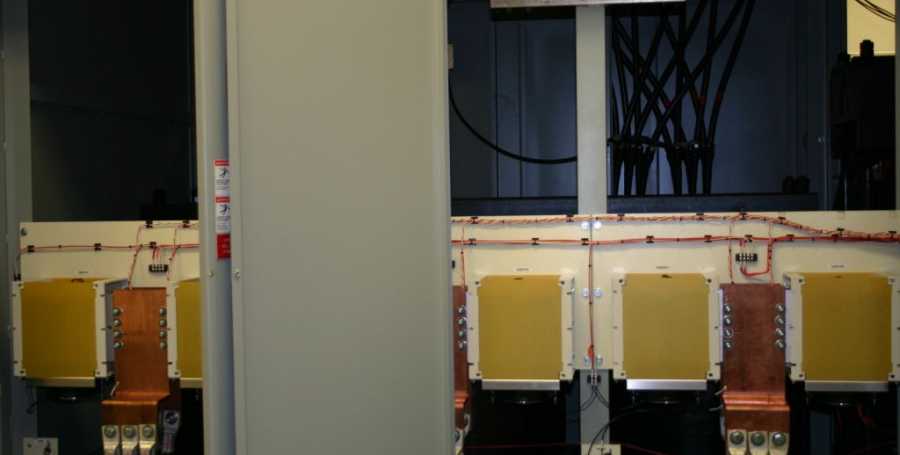Chicago Sanitary and Ship Canal IIA
Smith-Root provided the technology for this permanent barrier to prevent invasive asian carp from reaching the Great Lakes.- Location: Romeoville, Illinois
- Commissioned: 2006
- Type: Waterway
Project description
After Barrier I, the demonstration barrier, proved successful, Smith-Root was engaged to design and construct a permanent barrier across the Chicago Sanitary and Ship Canal. The final design split the permanent barrier into two parts IIA and IIB. IIA was funded and began construction in 2006. Electrodes for both IIA and IIB were installed in the 2A contract. They consisted of bundled billets of steel 5 inches x 5 inches flash-butt welded on site, and lowered onto concrete sleepers. IIA has a wide array 66 feet long targeted at large fish, and an adjacent narrow array 38 feet long with a higher field strength for smaller fish. Three pulsators provide redundancy.
Similar to Barrier I, particular challenges were the size of the canal, the need for a long field because of the barges, high and variable conductivity of the canal water, canal water temperatures, and the unavailability of the canal walls because of barge movements. The pulsators required a large power supply system and custom electronic switches that were cooled by water circulated from the canal through heat exchangers.
Essentially complete by 2006, the barrier started regular service in 2009.
Services provided
- Coordination with owner U.S. Army Corps of Engineers, Chicago District
- Coordination with fish researchers
- Civil engineering for the barrier layout, structural design of the building, electrical design of the pulsator and power supply systems
- Prime contracting for construction, installation, and commissioning
- Continued monitoring of electrical barrier remotely to ensure system integrity
- Complete annual maintenance of electrical barrier
Site characteristics
- Pulsators: Custom
- Pulsator Qty: 3
- Power Output: 1850kW max.
- Water Depth: 25 feet
- Waterway Width: 160 feet
- Water Velocity: (-1)-3 ft./s
- Conductivity: 3500 µ/cm max.


